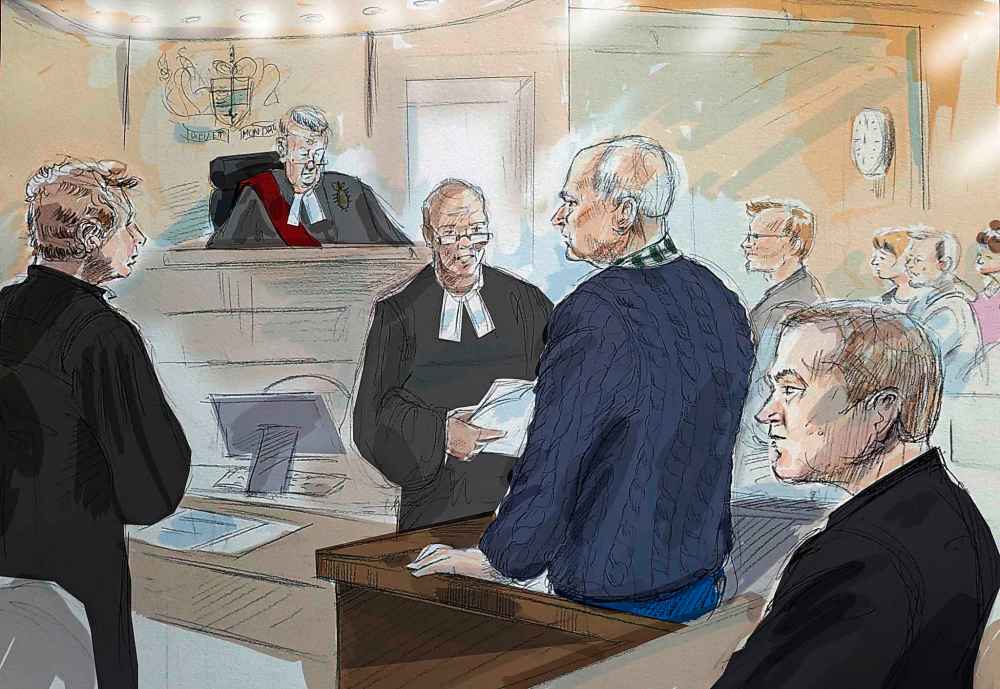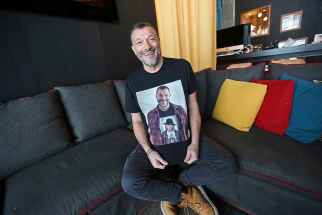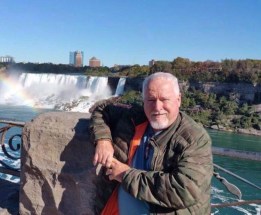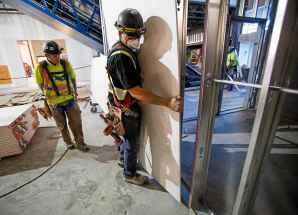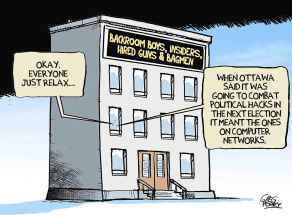Serial killer Bruce McArthur strangled victims, posed bodies for photos
Read this article for free:
or
Already have an account? Log in here »
To continue reading, please subscribe:
Monthly Digital Subscription
$0 for the first 4 weeks*
- Enjoy unlimited reading on winnipegfreepress.com
- Read the E-Edition, our digital replica newspaper
- Access News Break, our award-winning app
- Play interactive puzzles
*No charge for 4 weeks then price increases to the regular rate of $19.00 plus GST every four weeks. Offer available to new and qualified returning subscribers only. Cancel any time.
Monthly Digital Subscription
$4.75/week*
- Enjoy unlimited reading on winnipegfreepress.com
- Read the E-Edition, our digital replica newspaper
- Access News Break, our award-winning app
- Play interactive puzzles
*Billed as $19 plus GST every four weeks. Cancel any time.
To continue reading, please subscribe:
Add Free Press access to your Brandon Sun subscription for only an additional
$1 for the first 4 weeks*
*Your next subscription payment will increase by $1.00 and you will be charged $16.99 plus GST for four weeks. After four weeks, your payment will increase to $23.99 plus GST every four weeks.
Read unlimited articles for free today:
or
Already have an account? Log in here »
Hey there, time traveller!
This article was published 04/02/2019 (2504 days ago), so information in it may no longer be current.
TORONTO – A serial killer who preyed on men from Toronto’s gay village took photographs of his victims’ bodies posed in various states of undress and kept the images on his computer, accessing some of them long after the killings.
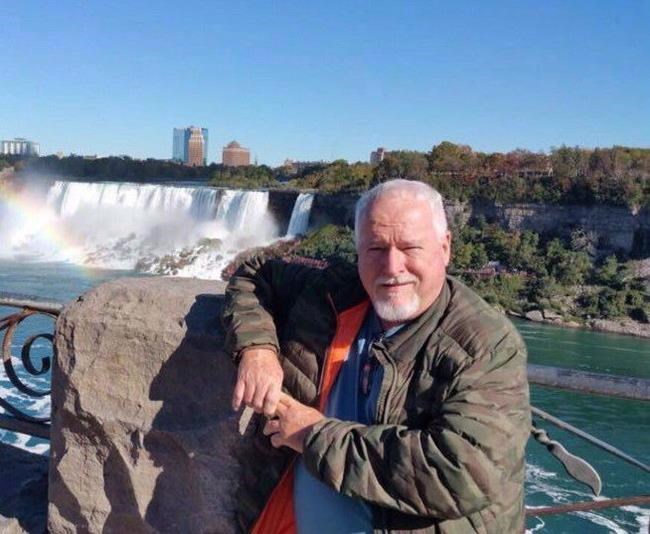
The Crown provided previously unheard details of Bruce McArthur’s eight murders at a sentencing hearing on Monday after the 67-year-old pleaded guilty to the crimes last week.
‘For years, members of LGBTQ community believed they were being targeted by a killer. They were right’ – prosecutor Michael Cantlon
“Mr. McArthur repeatedly killed people using ligature strangulation through the use of rope,” said prosecutor Michael Cantlon. “Mr. McArthur’s involvement with each victim did not cease at the end of each killing. Post-death, Mr. McArthur posed the victims before photographing them.”
Victims date back to 2012
TORONTO — Here is a glance at the victims of serial killer Bruce McArthur, who has pleaded guilty to eight counts of first-degree murder:
MAJEED KAYHAN
The 58-year-old Toronto man was killed on or about Oct. 18, 2012. Police investigated his death as part of Project Houston, which ran from November 2012 to April 2014 and probed the disappearances of three men who went missing from Toronto’s gay village. The probe was closed after yielding neither suspects nor leads on what happened to the men. Kayhan’s death was sexual in nature.
SOROUSH MAHMUDI
The 50-year-old was killed on or about Aug. 15, 2015. He was reported missing by his family in east Toronto. A ligature was used in Mahmudi’s death, which was sexual in nature. A coat found in McArthur’s van contained Mahmudi’s DNA. The same coat was connected to the staging of other deceased victims.
DEAN LISOWICK
Lisowick, of no fixed address, was killed on or about April 23, 2016. He was 43 or 44 years old and was never reported missing. Lisowick didn’t fit the profile of the earlier victims, who were gay and of Middle Eastern descent. A ligature was used in Lisowick’s murder, which was sexual in nature. Jewelry belonging to Lisowick was found in McArthur’s bedroom.
SELIM ESEN
Esen, 44, of Toronto, was killed on or about April 16, 2017. The disappearance became part of a police investigation called Project Prism, launched in August 2017. Five months later, McArthur was charged with Esen’s presumed death. A ligature was used in his murder, and there was evidence of confinment with ropes. Esen’s DNA as well as the weapon used in his murder were found inside McArthur’s van. Esen’s notebook was later found in McArthur’s apartment.
ANDREW KINSMAN
The 49-year-old Toronto man was killed on or about June 26, 2017. Kinsman, who was also a subject of Project Prism, had a sexual relationship with McArthur. Kinsman’s sisters said they searched for their brother for six months before police eventually charged McArthur in his death. A ligature was used in his murder as well as confinment with ropes. Video surveillance showed Kinsman getting into McArthur’s van outside Kinsman’s home. Kinsman’s DNA and the weapon used in his murder were found inside McArthur’s van.
SKANDARAJ NAVARATNAM
The 40-year-old was killed on or about Sept. 6, 2010. During the investigation, police found a piece of leather lacing from McArthur’s van that contained Navaratnam’s DNA. A bracelet belonging to Navaratnam was found in McArthur’s bedroom.
ABDULBASIR FAIZI
Faizi was killed on or about Dec. 29, 2010. The 42-year-old was last seen in Toronto’s gay village. His vehicle was found near the home of one of McArthur’s landscaping clients. Faizi’s disappearance was also investigated as part of Project Houston.
KIRUSHNA KANAGARATNAM
Kanagaratnam arrived in Toronto from Sri Lanka in 2010 and police believe he died on or about Jan. 6, 2016, at age 37. He was never reported missing and unlike McArthur’s other victims, Kanagaratnam had no clear ties to the LGBTQ community. A ligature was used in his murder, which was sexual in nature. An unnamed international agency helped identify Kanagaratnam after investigators released a heavily edited photo of a dead man in a plea for public help.
SOURCE: Toronto police
—The Canadian Press
Police arrested McArthur in January 2018 and charged him for the murders of Andrew Kinsman and Selim Esen. They later charged McArthur for the murders of Majeed Kayhan, Dean Lisowick, Soroush Mahmudi, Skandaraj Navaratnam, Abdulbasir Faizi, and Kirushna Kanagaratnam. All of the men had ties to Toronto’s gay village.
“For years, members of LGBTQ community believed they were being targeted by a killer,” Cantlon said. “They were right.”
Many of the victims’ families and friends wept in court as Cantlon went through each of the murders.
“Most of the deceased had traits that made victimization more likely or harder to detect,” he said. “Some were forced to live parts of their life in secret because of their orientation. Some lack stable housing.”
McArthur used those vulnerabilities to his advantage, said Cantlon, who choked up at one point reading the victims names.
Many of the victims met or communicated with McArthur through dating apps, Cantlon said. Most of the killings took place under the pretence of sex at McArthur’s home.
“A frequent site of the killings was Mr. McArthur’s bedroom,” Cantlon said of the murders that occurred between 2010 and 2017.
McArthur kept a large cache of photographs of each of his victims — when they were alive and dead. Many images showed dead or unconscious naked men wrapped in the same fur coat, some with a cigar in their mouths.
“These photographs were then accessed by Mr. McArthur long after the killings,” Cantlon said.
After taking his photographs, McArthur would dismember his victims and dump the body parts in planters around a residential property in midtown Toronto where he stored his landscaping equipment, or in a ravine behind the home.
Court also heard about a man who was found handcuffed to McArthur’s bed when police, who had the serial killer under surveillance, rushed in to make their arrest.
McArthur admitted he sexually assaulted and forcibly confined many of his victims before murdering them, Cantlon said.
Police found victims’ belongings in McArthur’s apartment, including a bracelet, jewelry and a notebook. They also found a duffel bag containing duct tape, a surgical glove, rope, zip ties, a bungee cord and syringes in McArthur’s bedroom along with the DNA of several victims inside his van.
Cantlon said Kinsman’s disappearance is what led police to a break in the case.
Investigators found Kinsman’s calendar with the entry titled “Bruce” dated June 26, 2017 — the day he disappeared. They also found surveillance footage where Kinsman lived showing him getting into a red Dodge Caravan. They couldn’t make out the van’s plates or who was driving.
A Dodge dealership worker told police it was a 2004 Dodge Caravan and when they requested information from Ontario’s Ministry of Transportation, they received a list of 6,181 red such vehicles made between 2003 and 2006.
Cantlon said the lead detective on the case then cross referenced the name Bruce with those vehicle owners and came back with five matches. Only one had previous contact with police: McArthur.
Court heard police had arrested McArthur in 2016 for assault for choking a man in the back of his van. The man escaped after a struggle, but police but never laid any charges. Court also heard police interviewed McArthur as a witness years earlier in relation to the disappearances of three of the victims.
Later Monday, emotions bubbled over in court as friends and family read out their victim impact statements.
“It saddens me to know Andrew is gone. I miss him very much,” said Kinsman’s sister Karen Coles. “He wanted to make the world a better place.”
Navaratnam’s friend said he hoped justice would be served.
“He was a highly intelligent man — he was almost unbeatable at scrabble,” the friend said of the man who went by the name Skanda. “Skanda will never be replaceable to me.”
A woman speaking on behalf of the Esen family had harsh words for McArthur and police.
“We can’t come to terms with his savage murder,” she said. “We also find it hard to believe that the serial killing of eight innocent gay persons went unnoticed for eight years.”
The Crown read out a statement by Lisowick’s daughter. She said she never knew her father.
“I was told he lived on the streets downtown. Growing up knowing that wasn’t easy,” she wrote. “I have a child and another baby on the way and unfortunately one day they will ask about my father and where he is and I will have to tell (them) how he was taken away from the world.”
Cantlon said McArthur has shown some remorse by waiving his right to a preliminary hearing and pleading guilty to the charges. He said there is no evidence that McArthur has murdered anyone else.
